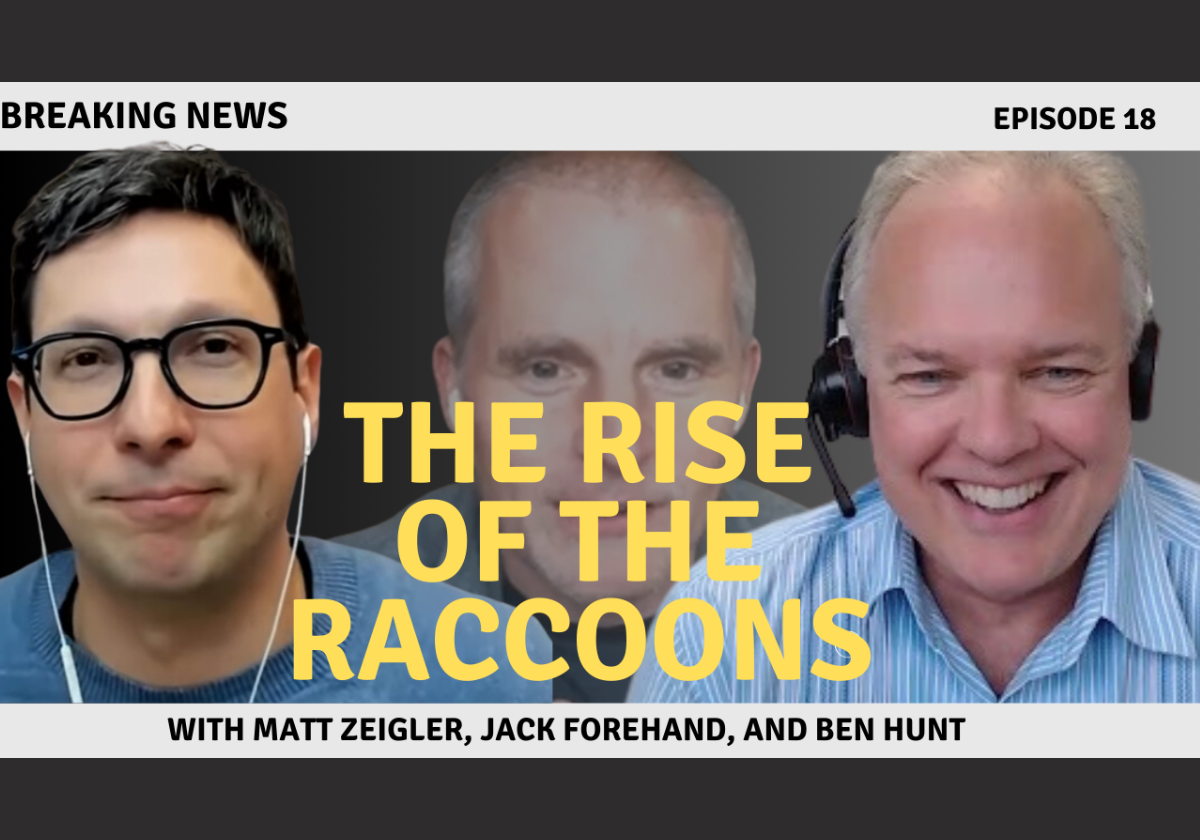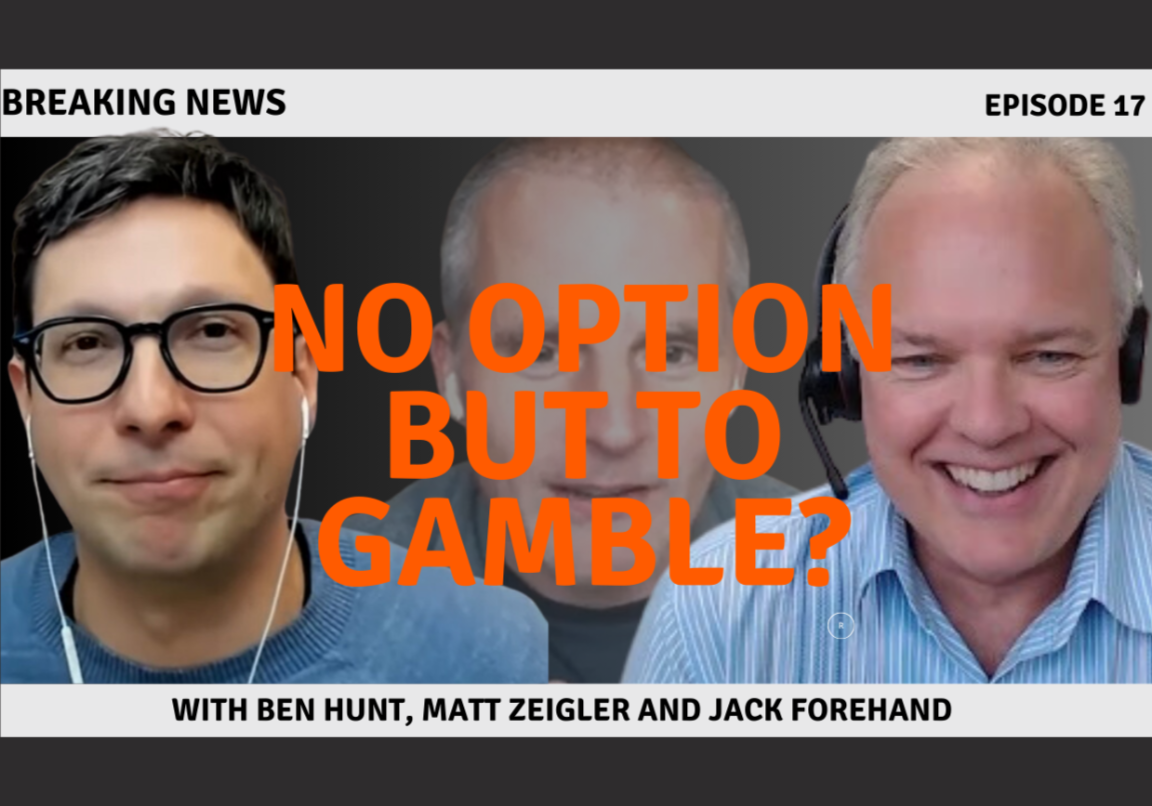Mailbag!
To learn more about Epsilon Theory and be notified when we release new content sign up here. You’ll receive an email every week and your information will never be shared with anyone else.
Continue the discussion at the Epsilon Theory Forum
The Latest From Epsilon Theory
This commentary is being provided to you as general information only and should not be taken as investment advice. The opinions expressed in these materials represent the personal views of the author(s). It is not investment research or a research recommendation, as it does not constitute substantive research or analysis. Any action that you take as a result of information contained in this document is ultimately your responsibility. Epsilon Theory will not accept liability for any loss or damage, including without limitation to any loss of profit, which may arise directly or indirectly from use of or reliance on such information. Consult your investment advisor before making any investment decisions. It must be noted, that no one can accurately predict the future of the market with certainty or guarantee future investment performance. Past performance is not a guarantee of future results.
Statements in this communication are forward-looking statements. The forward-looking statements and other views expressed herein are as of the date of this publication. Actual future results or occurrences may differ significantly from those anticipated in any forward-looking statements, and there is no guarantee that any predictions will come to pass. The views expressed herein are subject to change at any time, due to numerous market and other factors. Epsilon Theory disclaims any obligation to update publicly or revise any forward-looking statements or views expressed herein. This information is neither an offer to sell nor a solicitation of any offer to buy any securities. This commentary has been prepared without regard to the individual financial circumstances and objectives of persons who receive it. Epsilon Theory recommends that investors independently evaluate particular investments and strategies, and encourages investors to seek the advice of a financial advisor. The appropriateness of a particular investment or strategy will depend on an investor’s individual circumstances and objectives.









Ben and Rusty, you guys might want to consider asking BobK71 to pen some guest pieces for you. I know his writing and insights are really good because I only understood about a quarter of his letter the first time through (like most ET pieces), but couldn’t wait to go back to read it again and again (like most ET pieces) and, after multiple reads, find I’m getting closer to understanding 75% of it (like most ET pieces). My humble suggestion, have him expand on the letter printed here for his first guest piece.
Separately, thank you for using my letter and thank you even more for the very helpful and robust answer. Several times, in several ET pieces, you have noted that (paraphrasing) our crystal balls are broken so we don’t know if inflation or deflation is coming next. Your explanation here and Gavekal’s graph have given me a much better understanding of how that duality can exist.
Looks like we will go 3rd quadrant (disinflationary bust) AND THEN 1st duadrant (inflationary boom). If we bet where the puck is going… The 3rd “disinflationary bust” says “sell everything else”. 1st wuandrant says “ buy gold and house, sell long bonds”. Should we do 80% 1 year treasury bills and 20% gold for liquid money (80% in 3rd and 20% in 1st) and switch 1 year treasury to buy houses when we are in 1st quadrant? Only 4th quadrant mention stocks, so maybe we should allocate some to S&P while transitioning from 4th to 3rd.
What’s you guys take?
⇧ Great color. Since you asked: I lean toward the view of disinflationary bust followed by inflationary something (it won’t look quite like the '70s, but it will be ugly). I’ve been buying fixed income with 4-6 yr duration on each 50bps back up in rates so to have income through the coming disinflation period, but so as not to have meaningful capital loss when inflation hits. I also accumulate gold and real estate on back ups (basically, following Ben’s buy real assets for a “fire and ice” scenario). I also aggressive rebalance from stocks to FI and cash when stocks rally and buy back in starting on ten-percent corrections (and moving around within equity as sectors rally/correct). That’s worked for years, but I am also modestly reducing overall equity exposure each year and increasing said real assets, gold (has not worked yet, but isn’t suppose to have - still not fun for whatever the reason), short-duration fixed income and cash. I don’t know where the puck will be, so everything, for me, is about changing at the margin and balancing for the unknown in a three body world.
I am just selling rips on S&P and I am NOT sophisticated to rebalance across secter. Other than that, i think we are on the same page. Stocks only sits in quadrant 4, and we are moving out of it. That’s my reasoning.
The weird thing in that 4 quadrant plot is that quadrant 2 has only “stable currencies”. I thought houses, gold would work too. Since quandrant 2 is “bust”, commodities are hard to tell. What if there is NO stable currencies since everybody else is “inflating bust” together with US $.
MMT answers “yes.” The key to this answer lies in seeing a flaw in the conventional “truth” of Treasury bonds, the reality of what Treasury bonds legally represent and, consequently, the value and usefulness they have in the operations of private commerce.
It is therefore possible to understand that fiat money creation by the sovereign government has two sources—the Federal Reserve, which creates fiat dollars as necessary to meet the liquidity demands of private commerce, and the U.S. Treasury, which creates fiat dollars (in the form of Treasury bonds) to meet the demands of federal spending beyond what can be covered by tax collections.
William Hummel has posted some articles that relate to Functional Finance and MMT with a few relevant links here:
http://wfhummel.net/index.html#0
http://wfhummel.net/hierarchyofmoney.html
http://wfhummel.net/deficits.html
http://wfhummel.net/needfortaxes.html
William posted his proposal for a National Depository system here:
http://wfhummel.net/NDS.html
Another goodie…https://www.bradford-delong.com/2019/01/what-is-modern-monetary-theory.html
***Do People change? BL…the vast majority of people can only be brought to beliefs other than those held by their society and peers either when they are young, or after prolonged and catastrophic failure–either of their personal method for living life or of their society’s way of running the world. We are now at the stage where these two forces are coming together. Our societies have failed to run themselves acceptably since 2008, and the youngs have no attachment to the status quo since it has never, ever worked for them.
Change is thus not only possible, it is now inevitable. But what sort of change it will be depends on the ideas lying on the ground.
In particular, faster trend growth would increase the long-run equilibrium interest rate, and what we need most, now that we are near full employment and approaching our target inflation rate, is faster potential growth. The neo-Wicksellian and Woodfordian approach to macroeconomics is well suited also to study that problem, which is critical to the future of the United States and global economies.
https://www.federalreserve.gov/newsevents/speech/fischer20160519.htm
I do adopt the Wicksellian framework on occasion.
There is no counterfactual “were we” about it. I understand it.
In the Wicksellian framework, the natural rate of interest is the interest rate at which planned investment (plus net borrowing from the government) is equal to desired saving at full employment (plus the net capital inflow from abroad). If the market rate of interest is below the natural rate, planned investment is greater than desired savings, businesses seeking to invest cannot sell enough bonds to finance investment and thus dip into their cash reserves, the monetary hot potato starts, and you get unexpected and rising inflation (and full or over-full employment).
William White says that the natural rate of interest is above the market rate. But he is wrong: we don’t see businesses dipping into their cash reserves to find investment, a monetary hot potato, unexpected and rising inflation, and full or over-full employment.
—Brad Delong
The are a lot of great ideas out there but no one has a silver bullet ! The more and more I look/read/analyze most of these narratives as nothing more than media gossip…no doubt they have power but where and how is like picking individual stocks…WTF do I know!
How bout this for great investing advice….live within your means / don’t buy shit you can’t afford or don’t need / save 10-20% of your income / Dollar-Cost-Ave with Indexes (the pros can’t beat it: https://jlcollinsnh.com), but they will happily take your money) / Retire early and stop watching CNBC/Fox , it rottens your brain / invest in increasing your internal BULLSHIT-METER Tool / and don’t drink anyones coo-laid but keep a skeptics eye on everything! ok its 5 o-clock somewhere, later…
This is exactly what I meant by “hedging my hedges”… and that quadrant graphic is really helpful. I think we all have portfolios that would probably warrant a prescription for bi-polar medication. The problem is you’re forced to choose between an “Inflation!” vs “Deflation!” path. But you have zero conviction on that path. Cash vs gold, cash flow RE vs speculative RE, farmland vs DJIA, pipelines, vs short term USTs, uranium miners, and even cryptos. Cash in the mattress vs LEAPs… Take a look at your portfolio… like really look at it. Forget about what you like and why you own the individual positions. If anyone from another time period looked at your portfolio overall they would say: “WTF.?” Meanwhile you probably have a perfectly good reason why you picked what you picked and it makes sense to you in X scenario.
“Give me the printer of money and I do NOT care who makes the laws”. I think this is Rothschild or somebody like that. In the theories of MMT framework, it is NOT that there is gross logic failure or view point. If we argue about the logic and reasoning or the view point of how to look at concepts like “national debt” we are arguing about the unimportant things. What is important is that should the two powers exist as opposed to “how to use the power”. Two powers being 1. “treasury deficit spending” AKA “national debt” & 2. Federal Reserve’s creation of currency units without limitation.
US Constitution 1st and 2nd Amendents, free speech and rights for mass to bear arms means the land of America should NOT trust the government. If the government misbehave, the mass can communicate and have the fire power to over thrown it.
Now what if the government uses MMT and causes mass error and wipe out people’s savings and improverize the mass? I will tell you the result. Old priest will admit “we were wrong about MMT” like the bankers in 2009, they will step down and retire while common 70 year old still have to go to McDonald to flip burgers. The mass is NOT angry enough to use their guns. While the mass is puzzled, a new priest will show up and tell you another theory of how we should use the “two powers” correctly.
Power corrupts people and those two powers will definitely attract socialpath and they will use the MMT to make their family and family retire while impoverish the mass.
To say the state is executing those power for the benefit of the “common good” of national population is the “stalking horse” (Ben’s terms), the goal is to transfer the “wealth” of the mass into the hands of the few that can smell blood out of those two powers. The prey is the mass.
If used correctly, MMT can benefit the mass. But it will NEVER be used correctly. In other words, that two powers should NOT exist to begin with. Like when the founders set up US constitution, they diffuse powers and make sure the mass can have power to make sure government does NOT cross the line.
Countries can run under “sound money” that nobody can do anything about. No FED’s power. Even if you let Fed power exist, at least you should have sound rules to regulate state power. I am NOT suggesting another agency to regulate treasury. Simple stuff like “if you create government bonds, please make sure those spendings of government can generate enough TAX to repay those interest and principle”. You can say I am suggesting running a nation like a household, BUT to say we have to have government spending for the country to exist is beyond me. To me, government can be reduced to zero and the private sector will run.
This MMT is simply a stalking horse for power grabbing trying make the private sector and the mass government’s bitch.
Regarding the ‘natural rate of interest:’
If I know John as a competent and prudent man, I’m willing to lend to his business at 5% a year, but if I know David is an alcoholic running his inherited business into the ground, the rate I’m willing to lend at is infinite.
What is the ‘natural’ rate? This points to the inherent problems of central planning (as opposed to letting every BobK do their own investing and risk-taking, without being nudged by central-bank rates) in finance. It’s a complete analogy with socialism, only that it deals with elite control of money and finance as opposed to elite control of shops and factories.
Central planning is always done in the name of the public but with the reality of taking from the public and mucking up the economic environment. ‘Natural’ rates of interest (and most of the sufficiently abstract reasoning and assumptions of modern economics, for that matter) are rhetorical tools in support of the ruling elites.